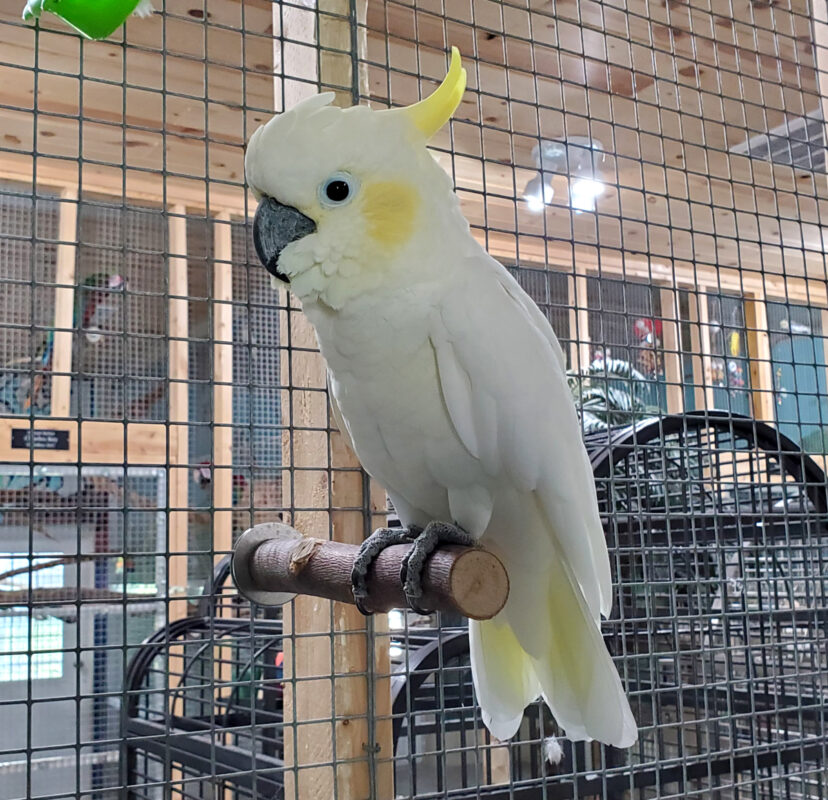
And, most importantly, watch them watching you. Get down on the grass and watch them walk – they have a jolly, comical gait – and watch them head-banging, flicking their sulphur-crest, puffing-up all of their feathers. If you are not convinced that sulphur-crested cockatoos deserve your vote, then I encourage you to spend some time observing them. Cockies are one of the playful clowns of the bird world – a worthy bird of the year 2019. Birds risking life and limb swooping through traffic as if they were Maverick from Top Gun in a fighter jet performing like a trapeze artist on power lines, flipping head over tail around the line, hanging upside down or from their beak (“look, no-hands”) not to mention them having the best “hair” in the bird world, with their sulphur-crest emphasising many behaviours, looks and vocalisations (screams, squeaks and trills). In addition to the personal stories and the social research, there are of course the larrikin stories. Cockies are clever and willing and able to interact with people, consequently we cannot conduct this cognitive research with most of the bird species eligible for your vote.


We then assess how this information spreads through the population.
#SULFUR CRESTED COCKATOO BACK HOW TO#
We then conduct experiments such as teaching dominant individuals how to solve a puzzle that provides a food reward (eg open a sliding door that automatically closes after a few seconds note, the door is cockatoo-sized, we’re not teaching them to break and enter homes). This allows us to intensively study the inner workings of cockatoo society.
#SULFUR CRESTED COCKATOO BACK CRACK#
With a crack team of researchers at the Max Planck Institute of Animal Behaviour, Australian Museum and Taronga Conservation Society, we have employed a simple method of temporarily colour marking flocks of birds (using individual combinations of paint on their back). This project is looking at cockie society, culture and how birds learn. The Clever Cockie Project is researching beyond the primary question of where birds move in the landscape, as reported on the Wingtags app. Let me say a big thank you to everyone who has gotten involved – oh, and vote sulphur-crested cockatoos as the 2019 bird of the year! Year after year human-cockie relationships continue to grow and new people constantly join the flock. We’ve received so many stories about different personalities: who’s the boss, who’s the bully, birds preening, breeding birds preparing their tree hollow home, and breeding pairs bringing their young to meet their human friends and maybe even share a meal. The tags provide certainty that CockaMel (003), Partyboy (027), Houdini (066) or Monster (078) are tapping on your window, perching on your balcony or munching the plants in the park. A fantastic outcome of this ongoing research is that so many people are connecting with individual birds.

By uniquely marking birds, we are all able to learn about individual birds’ behaviours. The Cockatoo Wingtags project asks you to report the tagged birds you see using the Wingtags app. I’ve also met a few haters, but I won’t be focusing on their “bad reputation” beyond saying they can be destructive, though most aren’t. As part of this work we’ve interacted with thousands of people who love cockies, the majority of whom have observed or interacted with cockies and have walked away touched by these charismatic birds. We’ve been researching cockies across the Sydney region through the Cockatoo Wingtags and Clever Cockie Projects. The reality is that we don’t know the answer to these questions for most species let alone the large, loud and common species.

Most people are surprised by this, yet we don’t know how long cockies live in the wild, or at what age (if any) they stop breeding, or what proportion of offspring survive to become breeding adults (seven years old) and many more life history facts. I often say to people that despite being large, loud and common in many urban areas, we know surprisingly little about our clever cockie friends.


 0 kommentar(er)
0 kommentar(er)
